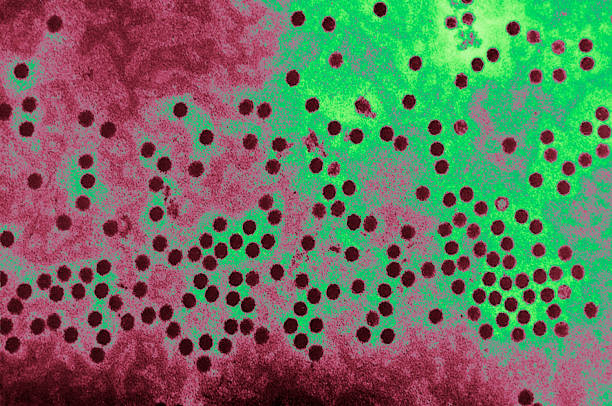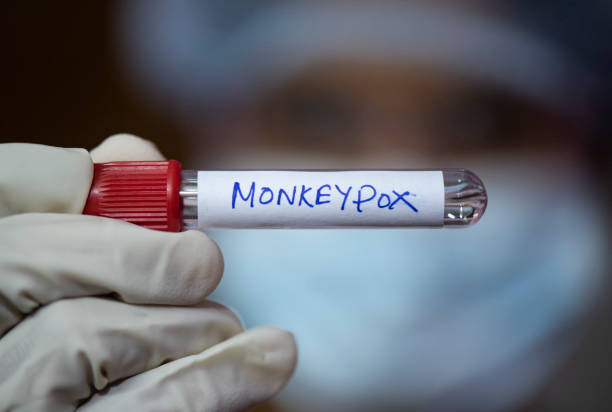Abby Parks had never encountered the term “parvovirus” until late April, when she began experiencing flu-like symptoms, soon followed by joint pain and a rash. Parks, 27, a special education teacher from Springfield, Illinois, was approximately 18 weeks pregnant at the time. She had been battling a persistent fever for several days, though tests for COVID-19 and strep throat came back negative.
The school nurse, who had observed students with strikingly “rosy, red cheeks,” suggested that Parks might be dealing with the same illness.
“I got progressively sicker,” Parks recounted. “I was confined to bed with a fever for four or five solid days.”
In early May, blood tests conducted by her OB-GYN confirmed that she had contracted parvovirus B19. She was subsequently referred to a specialist in maternal-fetal medicine. The specialist discovered that the virus had crossed the placental barrier, infecting the fetus, which had developed severe anemia—a potentially life-threatening condition. Doctors administered an in utero blood transfusion to the fetus.

ALSO READ : Gena Rowlands Notebook actress and Star of Movies dies at 94
Parvovirus B19
The number of parvovirus B19 cases—commonly known as Fifth disease or “slapped cheek syndrome” due to the red rash it causes on the face—is on the rise in the United States. On Tuesday, the Centers for Disease Control and Prevention (CDC) issued a warning to healthcare providers to be vigilant for this highly contagious seasonal virus.
According to the CDC, the majority of infections occur in children aged 5 to 9. Since March, parvovirus has been circulating at unusually high rates in Europe, as reported by the European Centre for Disease Prevention and Control.
Most adults, having contracted the virus during childhood, retain immunity. However, the CDC cautioned that pregnant women and individuals with sickle cell disease who have never been exposed to the virus are at risk of severe illness.
Parks’ physician, Dr. Kathy Bligard, an OB-GYN at Washington University Hospital in St. Louis, noted, “Abby is not the only patient whose fetus has required a blood transfusion due to parvovirus in recent months. It’s something I used to encounter perhaps once every other year, but I’ve seen multiple cases over the last few months.”

Bligard explained that parvovirus poses a significant risk to pregnant women because it can cross the placenta, infecting the fetus and potentially leading to severe anemia, which can result in fetal demise.
While Parks has recovered from the virus, her pregnancy remains precarious.
On Wednesday morning, after an ultrasound revealed that the fetus wasn’t receiving sufficient blood from the placenta, Parks was admitted to a Springfield hospital for further care.
“I truly believe the earlier transfusion saved the fetus’s life,” Parks said. “If that anemia had persisted, with such a low blood count, the baby might not have survived,” she shared in an interview from her hospital bed on Wednesday.
Bligard noted that the virus impedes the fetus’s ability to produce new red blood cells. “Our bodies rely on red blood cells to transport oxygen to all vital organs. A deficiency can lead to heart failure or even death due to low blood counts.”
Though the disease predominantly affects children, adults who contract it may experience more severe symptoms, including joint pain and anemia, due to impaired red blood cell production, according to Dr. Vincent Iannelli, a pediatrician in the Dallas area. Low red blood cell counts can also complicate pregnancies.
Individuals with sickle cell disease are at particularly high risk.
“In the past month or two, we’ve seen an uptick in cases,” Iannelli noted. Typically, he would see one case of Fifth disease per month, but now he’s encountering one to two cases weekly. The virus tends to be more prevalent in the spring and summer.
What are the symptoms of Fifth disease?
In children, Fifth disease is generally mild. It typically presents with fever and respiratory symptoms, followed by a red rash on the cheeks, and later, a “lacy” rash on the rest of the body, which may cause itching.
The rash usually appears towards the end of the infection and generally resolves within seven to ten days, though it can persist for several weeks. Crucially, an individual with Fifth disease is no longer contagious once the rash appears. “Unfortunately, by the time you realize your child has it, they’re no longer contagious,” Iannelli said.
The rash can become more pronounced with exposure to heat and sunlight, though this doesn’t worsen the infection, Iannelli explained.
Pregnant women who experience symptoms such as joint pain or difficulty producing red blood cells should consult their doctors immediately, especially if they’ve been in contact with someone infected with Fifth disease, experts advise.
Iannelli doesn’t believe the rise in cases should cause alarm.
“Fortunately, most pregnant women were infected as children and are therefore immune. But occasionally, we do see adults,” he said.
In conclusion, “If you’re healthy, it’s a mild disease,” Iannelli said. “If you have immune system issues or are pregnant, especially in the early stages, you should inform your doctor. But for everyone else, it’s essentially just a rash.”
He emphasized that the CDC’s alert was intended to increase awareness among healthcare providers, not to alarm the public.
Why is it called Fifth disease?
In the early 1900s, physicians developed a list of common childhood rashes to improve diagnostic precision. They identified six major rashes:
- Measles, a highly contagious virus causing rash, high fever, and respiratory symptoms.
- Scarlet fever, a bacterial infection caused by group A streptococcus.
- Rubella, a viral infection also known as German measles. Exposure during pregnancy can lead to miscarriage or stillbirth. The CDC recommends two doses of the MMR (measles-mumps-rubella) vaccine for children.
- Filatov-Dukes disease, no longer considered a distinct illness.
- Fifth disease, or parvovirus B19, also known as erythema infectiosum.
- Roseola, a viral infection sometimes referred to as Sixth disease, which can cause high fever and rash.
Today, additional childhood rashes, such as chickenpox, are recognized, so the numbering system is largely obsolete, except for Fifth disease.
Parks, now 30 weeks pregnant, remains under close observation in the hospital. She urges other pregnant women to be aware of the virus and to seek testing if they have been exposed.
“This has been the most challenging experience I’ve ever faced,” Parks said. “He wasn’t guaranteed to survive the fetal anemia.”




One thought on “Parvovirus B19 highly contagious warned by CDC on the rise cases of. What is it?”